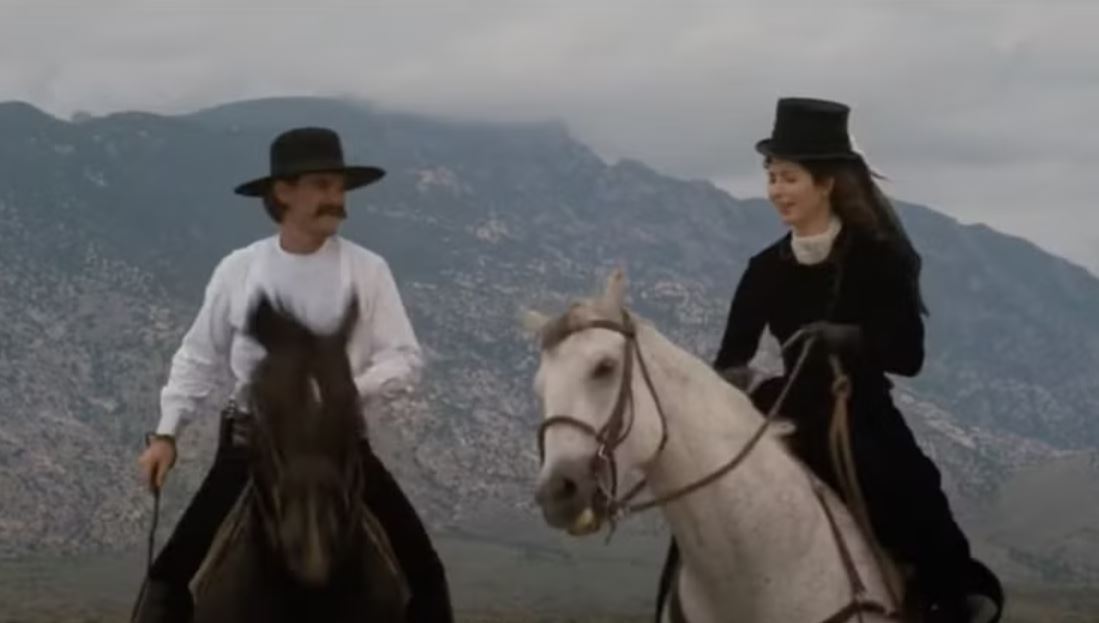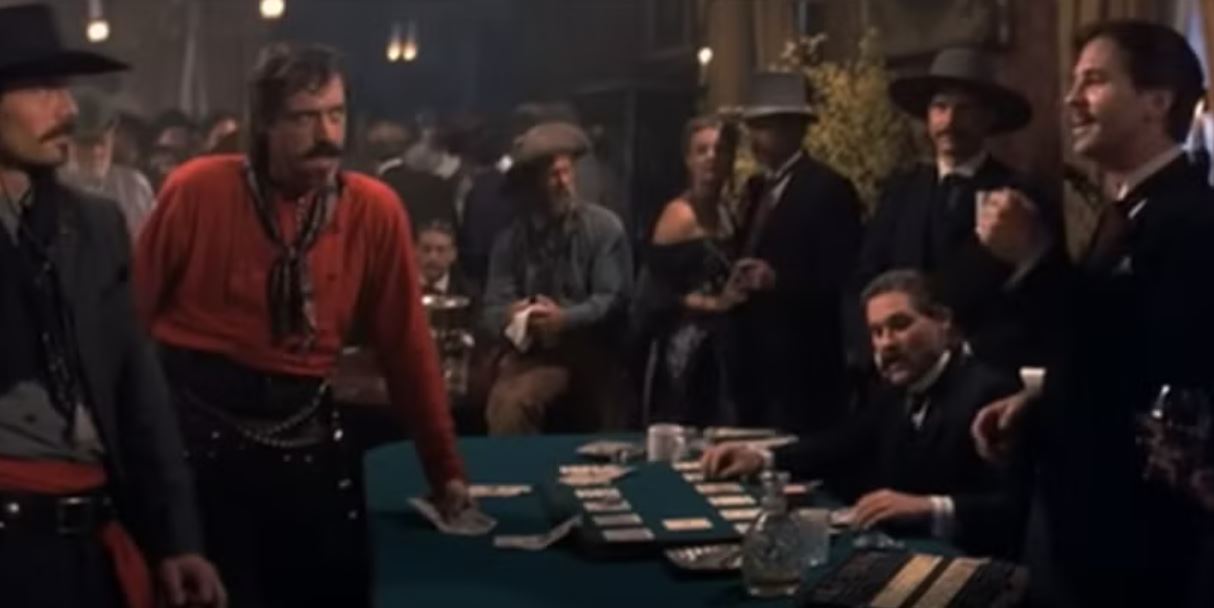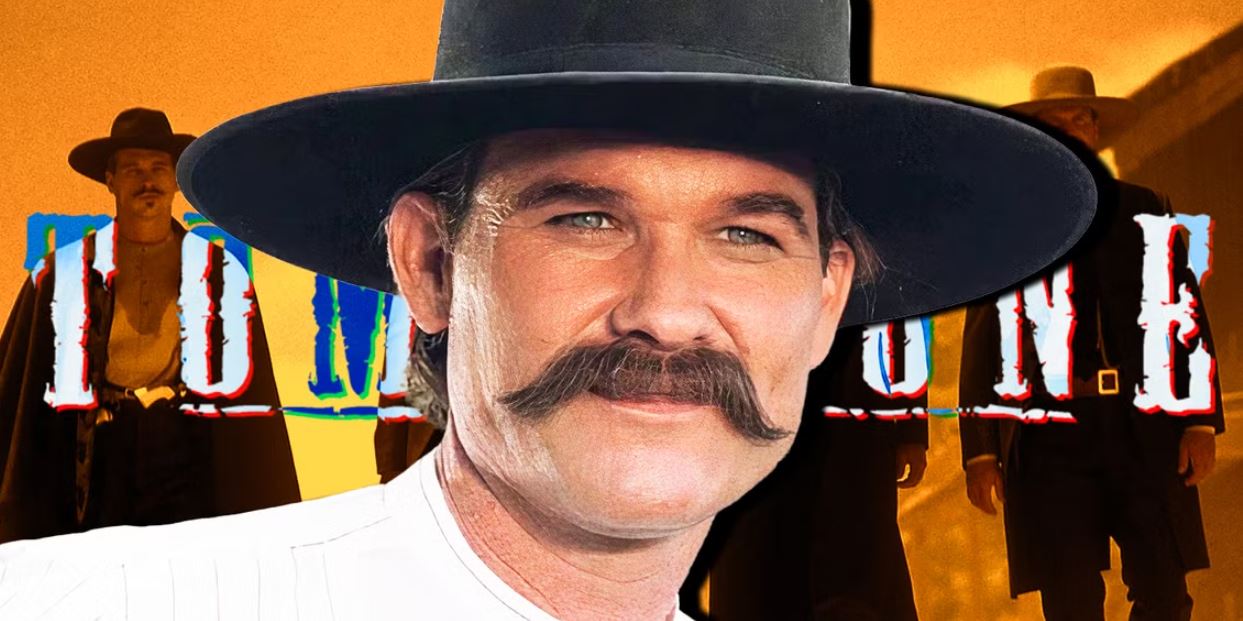In an interview with GQ in January 2024, actor Kurt Russel discussed his 1993 film, Tombstone, and the film’s reputation as one of the greatest Western films ever made. Russell, who played the famous gunslinger, Wyatt Earp, explained he was happy that so many people hold the film in such high regard. The film details the exploits of Wyatt Earp and Doc Holliday and their legendary feud with the Cowboys. He feels there are multiple factors that contribute to the film’s enduring legacy. When Russell first opened Tombstone’s script, he was greeted with the instructions “Forget everything you’ve ever seen or read about Westerns, it’s untrue.” This statement of purpose led the film to become one of the greatest Westerns of all time.
Tombstone’s adherence to realism can be seen in not only the film’s costumes and sets, but also the complex characters that seem plucked straight out of the Old West. The expertly crafted film pulls audiences into the wild and rugged landscape of Arizona in the 19th century. Each shot feels so intentional and meticulously crafted. Thanks to this passion, Tombstone has earned its place in not only the Western genre, but film history.
Tombstone Shines a Spotlight on the American Southwest
The Film Uses Arizona’s Natural Beauty to Enhance the Story
Tombstone is an iconic Western in large part for its brilliant use of America’s beautiful South West landscape. The film used Old Tucson Studios in Mescal as a shooting location, in addition to other scenic areas in the state of Arizona, like Sonoita, Texas Canyon, and the San Pedro River. Wide open plains, majestic mountain ranges, all aglow in warm sunlight, help the film capture the aspirational image of the Wild West, a place where anything was possible and anyone could start a new life. The use of real locations, steeped in history and natural beauty, no doubt helped the cast embody their characters, the locations making it easier to get into the mindset of historical figures like Wyatt Earp and Doc Holliday.
Tombstone’s use of Arizona’s landscape also helps the film create an atmosphere of consternation. Horseback riders and covered wagons are often seen as tiny specs moving through vast expanses of desert, infinitesimal beings moving through a massive and apathetic environment. This setting adds to the threat of the overwhelming obstacles faced by Wyatt Earp and Doc Holliday as they attempt to confront the all-powerful Cowboys and the corrupt institutions that protect them.

The Dedication to Detail Has Helped Tombstone Stand the Test of Time
By Prioritizing Period Accuracy, Tombstone Stands Out Among Western Films
Tombstone’s gorgeously rendered costumes and sets help pull the audience into the world of Wyatt Earp and Doc Holliday. The cast grew real mustaches to help them step into the boots of legendary gunslingers. Wyatt Earp and his brothers create an impactful image when they move through town in their all-black ensembles. This costume choice was inspired by the Earps’ origins as Quakers from Illinois. Moving in unison in an all black, block allows the Earps to convey a sense of stability and force.
When planning the costumes for Tombstone, the production team was inspired by the history of the legendary silver mining town, and how people liked to show their wealth in the way they dressed to show that they had means and were dependable. Showing the characters dressed to the nines also helped imply their ambition. The Earps, and other important figures of the time, came to the silver mining town to get rich and make a name for themselves. By impeccably dressing the characters in meticulously crafted wardrobes, the film helps convey the characters’ desires to dominate the businesses and politics of the Old West.
Tombstone’s Dialogue is a Daisy
The Use of Period Accurate Dialogue Has Made Tombstone an Icon of Pop Culture
In his interview with GQ, Kurt Russell discussed his film Tombstone and how there are no other Western films from which fans can quote as much dialogue, stating “That’s undeniable.” Many other Westerns have chosen to ignore period accuracy when writing dialogue for characters, talking down to the audience and underestimating their abilities to use context to decipher unfamiliar phrases. Tombstone assumes its audience is intelligent, and doesn’t shy away from using esoteric idioms and phrases lost to time. The film’s writer, Kevin Jarre, used periodicals from the time period to develop the dialogue with an understanding of how people actually spoke. Newspapers from the time reported Holliday saying “Blaze away! You’re a daisy if you have!” at the famous O.K. Corral showdown, from which Jarre developed Doc Holliday’s iconic catchphrase “You’re a daisy if you do,” which now emblazons countless t-shirts and other fan art.
The period-accurate dialogue in Tombstone helps the film develop multifaceted characters. Doc Holliday’s use of “You’re a daisy if you do,” adds to his character’s association with death, in the way he uses it whenever he tries to tempt another gunman into ending his suffering with tuberculosis. Using words and phrases that are rich with historical meaning adds layers to the characters, and allows them to be more nuanced.
Impressive Action Sequences Make Tombstone a Memorable Adventure
The Expertly Choreographed Fights and Riding Scenes Energize the Film
Tombstone emphasizes the brutality of the Wild West throughout the film, incorporating not only the legendary showdown at the O.K. Corral, but other gunfights and brawls into the story. Populating Tombstone with pugnacious gunslingers helps show the greed and ambition of characters who aren’t afraid to do whatever it takes to get what they want. The film uses fight scenes to build the engaging conflict between the Earps and the Cowboys. This antagonism is slowly built up through early scenes, making the silver mining town feel like a powder keg ready to blow, and adding a foreboding feeling to every moment in the first half of the film.
The latter half of Tombstone takes a shocking turn towards violence during Wyatt Earp’s reckoning. These scenes are bloodcurdling for not only how mercilessly Earp’s posse hunts down the Cowboys, but also for how sadistically creative and skilled their methods are – chasing down Cowboys on horseback with hell-bent focus, or swiping an opium pipe for the barrel of a pistol. Earp’s unwavering pursuit of the Cowboys makes his character more ethically questionable and adds to the film’s discussion of law enforcement versus vigilantism.

Tombstone Has the Definitive Versions of Wyatt Earp and Doc Holliday
The Film’s Nuanced Portrayal of the Legendary Figures Has Made Them Memorable to Audiences
Unlike many other Western films, Tombstone wasn’t afraid to dive into the less admirable and morally questionable aspects of Wyatt Earp and Doc Holliday’s lives. In addition to their heroism in stopping the Cowboys, the film shows how the two men also served their own interests, like their hopes of profiting off the businesses in Tombstone. In portraying the two figures’ proclivity for violence, the film is able to question if violence is an inescapable part of human nature, and what more ferocious side of a person is revealed when they journey into unknown frontiers.
Russell attributes Tombstone’s lasting appeal to the film’s story. This story, about a family surviving in a time when organized crime was beginning to evolve, portrays relatable characters getting by in spite of overwhelming circumstances, and how people can be driven to violent extremes. The realism of the characters, who experience constant inner conflict, helps the film avoid the one-dimensional good guys versus bad guys portrayal of the Wild West in past films, and shows how most legendary figures of the time period were morally gray.
Tombstone Chases an Ever-Expanding Horizon
The Film Captures the Enduring Allure of the Wild West
Tombstone shows a reverence for the Western genre. Important figures in Western film and television were included in the film, like Robert Mitchum, Buck Taylor, and Charlton Heston. Even Wyatt Earp’s real life cousin, Wyatt Earp III. There was a real grave marker of Lester Moor, who died by four slugs from a 44, from the actual town of Tombstone that was recreated for the film. Constant references to classic Westerns show the film’s appreciation and love for the Wild West. The film’s clear love of the genre and the time period helps it capture both the hope and prosperity promised by the West, while also portraying the savagery of the time period.
Despite death lurking behind every saloon door, Tombstone understands the appeal of the Wild West to people like Earp and Holliday. The two legendary gunslingers were always searching for another adventure beyond the horizon. The wide open plains of the West promised not only wealth but fresh starts and freedom. Earp’s transition from a detached businessman to a dedicated lawman, and Holliday’s quest to find the “daisy” of a gunman who could best him, both perfectly capture the timeless appeal of the Wild West.
Since its release in 1993, Tombstone has become a paragon of the Western genre. The film’s insistence on period accuracy and dedication to developing nuanced characters allow it to perfectly capture the paradoxes and complexities of the time period it portrays. Doc Holliday’s desire to live each day like it’s his last captures the carpe diem spirit that inspired so many to find their fortune out West. Wyatt Earp’s journey through the film explores what it means to be a lawman in a lawless land, and how extreme circumstances drive people to violent actions. Earp’s struggle to be a peacemaker in the face of corrupt legal systems and powerful criminals continues to feel relevant and poignant today. The film isn’t afraid to ask the audience to question Earp and Holliday’s motives, encouraging people to ask if they were heroes or ruthless vigilantes, creating a story that explores the thin line between justice and revenge.
Tombstone is an undeniably great Western because it doesn’t romanticize life in the Wild West. The film shows the hardships of the brutal time period, while also portraying the inspiring ways people managed to survive, resulting in a story that sticks with audiences long after that last ride into the sunset.
